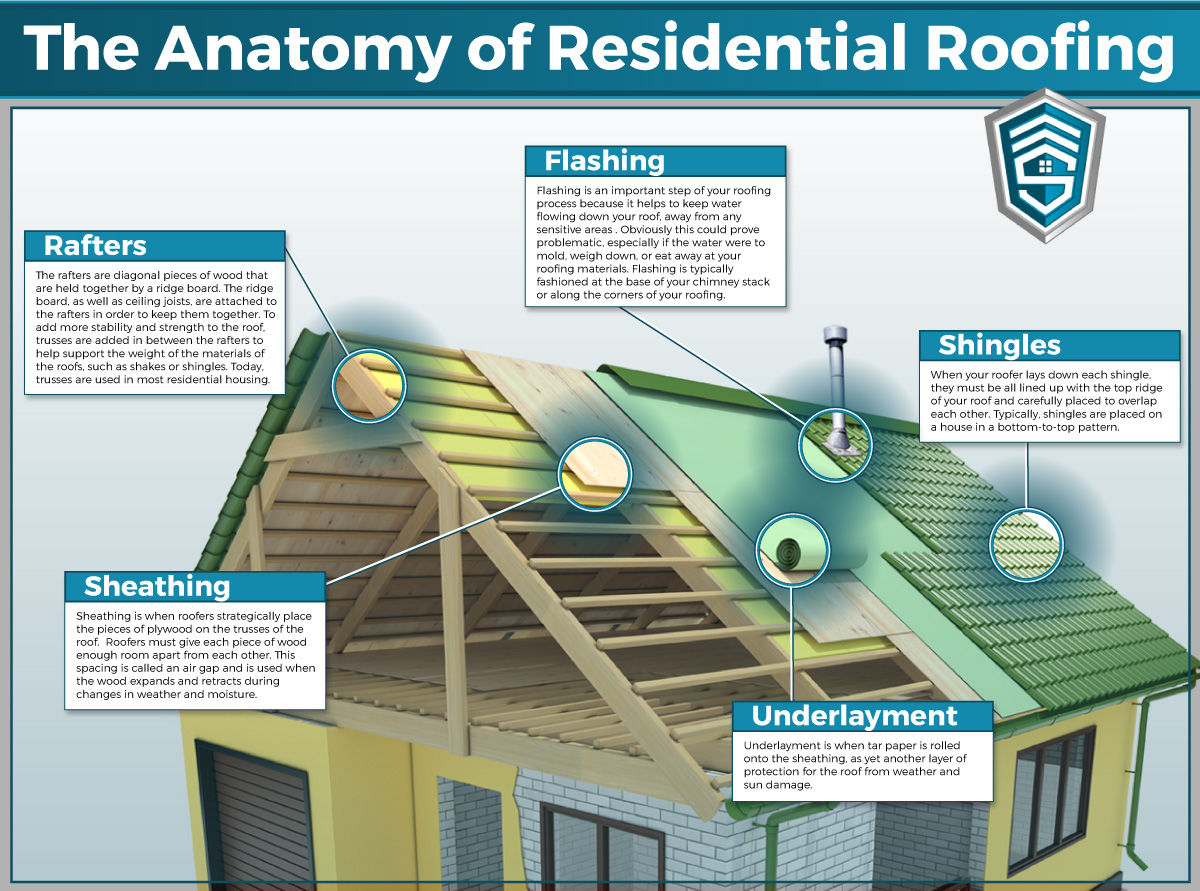Disregarding Roof Ventilation Can Result In Expensive Repair Services; Discover The Essential Factors To Consider That Ensure Reliable Setup And Preserve Your Financial Investment
Disregarding Roof Ventilation Can Result In Expensive Repair Services; Discover The Essential Factors To Consider That Ensure Reliable Setup And Preserve Your Financial Investment
Blog Article
Authored By-Byrne Vogel
When you're taking on a roof project, you might not think much concerning roof air flow, yet it's even more vital than you recognize. Effective ventilation aids regulate temperature and moisture in your attic, avoiding problems like mold and architectural damage. By comprehending just how to design and mount a well balanced ventilation system, you can enhance power efficiency and lengthen the life expectancy of your roof products. So, what are the essential factors to consider throughout installation that can make all the distinction?
Relevance of Roof Ventilation
Roof covering air flow plays an essential role in keeping the total health of your home. By permitting fresh air to flow through your attic room, it aids manage temperature and moisture degrees. This equilibrium is essential to avoid warmth accumulation during warm months, which can lead to boosted power prices as your a/c works overtime.
Additionally, correct air flow considerably lowers the risk of moisture-related concerns like mold and mold. If humidity levels rise, your home's architectural integrity can be endangered, causing expensive repair services. You would not intend to manage deteriorating timber or deformed roof covering products, right?
Furthermore, adequate air flow expands the life expectancy of your roofing system. When warm and wetness are kept in check, your roof can do efficiently, stopping premature deterioration. This indicates fewer headaches and costs down the line.
How Roofing Ventilation Functions
Reliable roofing air flow relies upon the all-natural motion of air to develop an equilibrium in between intake and exhaust. When linked website install vents, you're basically allowing fresh air to enter your attic while enabling warm, stale air to run away. This process aids manage temperature level and wetness levels, avoiding problems like mold and mildew development and roof damages.
Intake vents, commonly discovered at the eaves, pull in awesome air from outdoors. Meanwhile, exhaust vents, located near the ridge of the roofing, let hot air surge and exit. The difference in temperature produces an all-natural airflow, referred to as the stack impact. As cozy air increases, it creates a vacuum cleaner that pulls in cooler air from the reduced vents.
To maximize this system, you need to guarantee that the consumption and exhaust vents are appropriately sized and placed. If kitchen remodeling is limited, you won't achieve the preferred ventilation.
Likewise, inadequate exhaust can trap warm and dampness, causing prospective damage.
Key Setup Considerations
When installing roof ventilation, several key considerations can make or damage your system's efficiency. First, you require to analyze your roofing's design. The pitch, form, and products all affect airflow and air flow selection. Ensure to select vents that suit your roofing type and regional climate problems.
Next off, take into consideration the placement of your vents. Ideally, you'll want a well balanced system with consumption and exhaust vents placed for ideal airflow. Location intake vents short on the roof covering and exhaust vents near the top to encourage an all-natural circulation of air. This setup helps prevent dampness accumulation and advertises power effectiveness.
Don't forget about insulation. supplemental resources in your attic room stops warmth from getting away and keeps your home comfy. Make sure that insulation doesn't obstruct your vents, as this can hinder air flow.
Finally, think about maintenance. Pick air flow systems that are very easy to accessibility for cleaning and inspection. Regular upkeep guarantees your system continues to work successfully gradually.
Conclusion
Finally, roofing ventilation is important for an effective installation. By ensuring proper air flow, you can prevent warm accumulation and moisture concerns that bring about costly damages. When you purposefully setting intake and exhaust vents, you improve energy performance and extend the lifespan of your roof. Bear in mind, a well-ventilated roofing not only shields your financial investment however also enhances your interior air quality. So, prioritize air flow to make certain a resilient and economical roofing system for your home.
